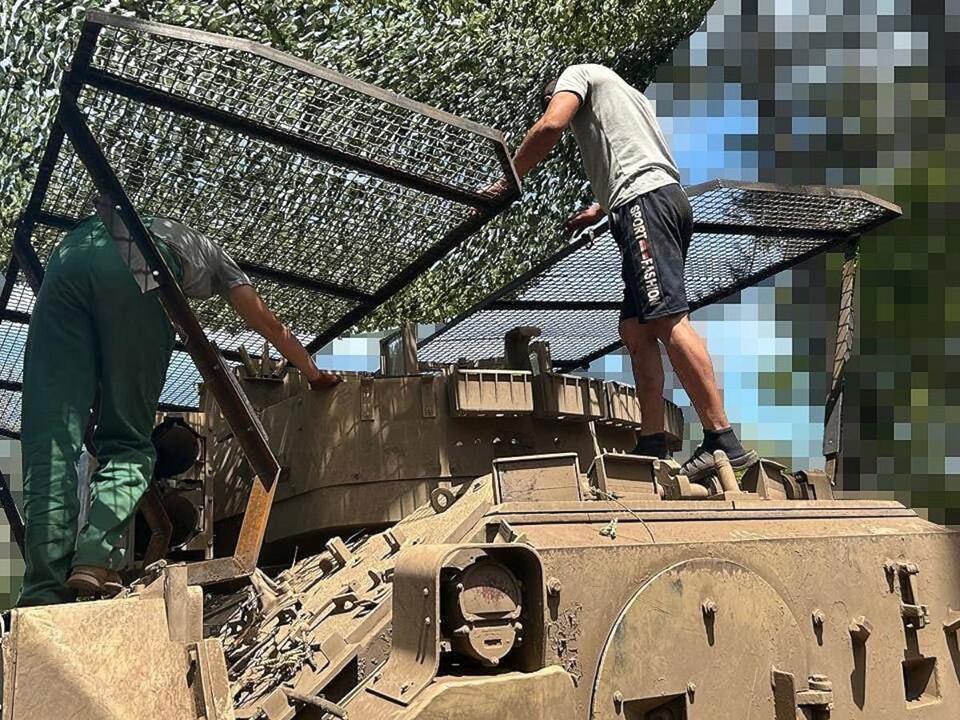Physical Address
304 North Cardinal St.
Dorchester Center, MA 02124
Physical Address
304 North Cardinal St.
Dorchester Center, MA 02124

As the conflict in Ukraine continues, the Ukrainian military reports significant improvements in the performance of U.S.-supplied Abrams tanks and Bradley armored vehicles. With the growing reliance on drones in warfare, Ukrainian soldiers and engineers say they are enhancing these vehicles to increase their protection and efficiency on the battlefield. Social media posts have demonstrated how effectively the crews and their vehicles have managed to navigate heavily mined areas.
“The Bradley is the best vehicle I’ve ever driven,” stated Oleksandr Shyrshyn, a member of the elite 47th Mechanized Brigade. He praised its precision, safety, and overall performance. “If we were still using our old IFV-1 or IFV-2, the losses would have been two or three times higher,” he remarked, highlighting the critical role these modern vehicles play in minimizing casualties.
In 2023, U.S. officials announced they would send 31 Abrams tanks to Ukraine, along with over 100 Bradley vehicles to bolster Ukraine’s defensive efforts against Russian forces. However, continuous fighting has prompted soldiers to seek further upgrades for these machines.
Shyrshyn pointed out that most injuries and damage occur during the boarding and disembarking of crews or from drone strikes. “We can’t alter the first factor, but we can counter the second one with a metal net,” he explained, referring to adaptations made to shield against drones like the popular first-person-view models.
These modifications are designed to defend against the latest drone technologies, but such enhancements have a storied history. Mick Mulroy, a former Deputy Assistant Secretary of Defense, noted that throughout history, tank operators have utilized additional armor to fend off various anti-tank threats. “Mesh, reactive armor, even chain-linked fences have been employed,” he explained.
Reports indicate that Shyrshyn’s unit has been active at a hot spot along the eastern front. Over recent days, Russian troops have made advancements, leaving Shyrshyn’s soldiers exhausted and in need of more vehicles while trying to protect those still operational.
To combat the drone threats, a Ukrainian steel manufacturer has begun creating specialized steel screens that can be affixed to the existing armor of the vehicles. Shyrshyn claimed these screens have significantly increased crew survival rates and helped protect vehicles from attacks by Russian drones.
According to Oleksandr Myronenko, COO of Metinvest Group, a Ukrainian steel manufacturer, the production of these screens takes about a week, with 12 hours required for installation. This initiative is part of a non-commercial project called Steel Front, which is spearheaded by Rinat Akhmetov, one of Ukraine’s wealthiest businessmen.
Shyrshyn mentioned that, although previously an engineer, he has rapidly transitioned into a military goods specialist since the onset of the invasion. “We started the project on day one of the invasion,” he recounted, adding that he now splits his weekdays between standard engineering duties and weekend missions to support frontline efforts.
The Steel Front initiative also encompasses other non-commercial projects, including the production of anti-tank defenses, body armor, and constructing fortifications in areas facing intense conflict.
While the Bradleys have recently begun testing these bespoke steel screens, the Abrams tanks have been utilizing them since February in various locations in eastern Ukraine. “Near Berdychiv, we quickly realized the vulnerabilities,” Shyrshyn said. He explained how inexpensive yet precise FPV drones could disable essential components of tanks, emphasizing the significant threat posed by these small-scale UAVs.
Shyrshyn highlighted that Abrams tanks excel predominantly in combat against other vehicles, using armor-piercing rounds rather than highly explosive munitions. Much of the fighting has occurred in urban and forested terrains, environments where infantry units often leverage drones for strategic advantage.
The introduction of steel screens appears to be a viable solution against these UAV attacks, providing essential protection for the vehicles and their crews. Shyrshyn stated, “We basically took a NATO standards manual and adjusted it,” showcasing the adaptability of Ukrainian forces in response to evolving battlefield dynamics.
Reflecting on the improvements made, Shyrshyn concluded, “We believe we could have mitigated some of the losses we experienced earlier.” He also expressed a desire for further reinforcements, advocating for increased provision of vehicles to enhance their operational capabilities. Mulroy echoed similar sentiments, reinforcing the effectiveness of the modifications being implemented across the fleet of Ukrainian tanks.
Source: ABC News



